Planning will save pet’s lives in bushfires
Planning for Bushfire survival has never been more vital than it is right now. We are all vulnerable and our pets and livestock are the most vulnerable of all.
Do you have a plan in place for a bushfire emergency and does the plan include your pets?
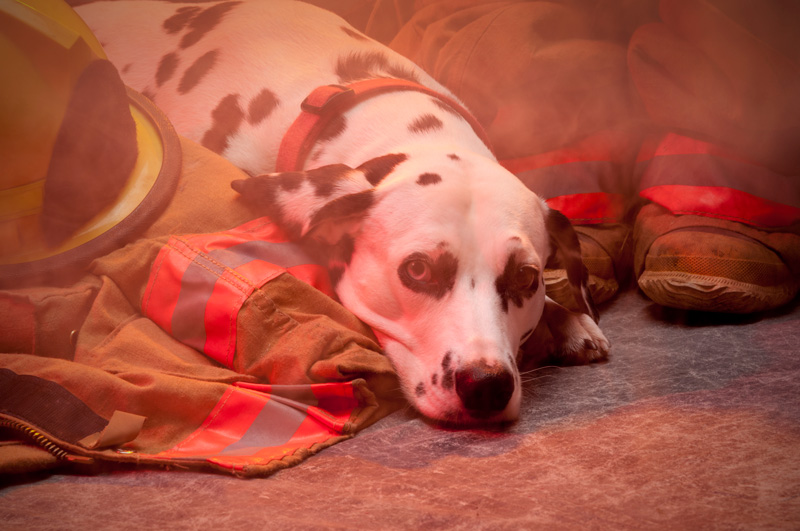
Pets can sense danger and may become stressed during a bushfire. It is important that you and your family have a clear bushfire survival plan in place that includes your pets.
Your State Emergency Service has a range of online resources available to assist you in planning for emergency situations. We have included the links below along with some handy flyers for you to download.
We have listed a few guidelines to help you in preparing your pet survival plan along with links to the key emergency organisations for state specific information.
1. Disaster plan
Just as you should develop an emergency plan for you and your family, ensure you have a disaster plan which incorporates your pets. Plan for several days without food or water, so ensure you always have enough non-perishable food in waterproof containers, drinking water, kitty litter and any essential pet medications in the event of an evacuation or stranding. Always decide ahead of any emergency if you will stay or go, and make sure your pet is included in these plans. Many evacuation centres do not take pets, so consider nominating some friends who could take you and your pets if needed.
2. Pet identification
In case you get separated from your pets, ensure their identification is current and visible. Although all dogs and cats should be microchipped, and these details kept current, it’s also important to have a name tag on your pet’s collar with your contact details, so your pets can be quickly reunited with you. Check your pet’s microchip details are up-to-date online. If you’ve forgotten your pet’s microchip number, or you can’t remember which database they are registered on, call your local council or veterinary clinic who will be able to point you in the right direction.
3. Evacuating with pets
If you ever need to evacuate from your property, it’s likely to be a very stressful and scary time. Plan well ahead of any evacuation, particularly if you have pets. Take your pets with you to your prearranged location, such as boarding kennels or a friend’s house. Ensure you have their cages and supplies readily available and keep your pets in the house with you just before evacuation to prevent them from running away. If you have horses, try to evacuate them well ahead of time to a prearranged location. If in doubt, it’s always better to be cautious and evacuate early.
4. After the emergency
Before returning home with your pets, check to make sure your house and backyard will be safe. Look for any live wires, contaminated water or sharp objects. Consider keeping your pets inside for the first day or so to help them settle back into their home after the evacuation. It’s likely they will be stressed and exhausted after the event, so keeping them close and safe is prudent. If you are worried about your pet after an emergency, contact your local veterinarian who will be able to assist. If your pet goes missing during a natural disaster or emergency, post on social media as well as contact your local shelters, council and emergency contacts daily.
Pet Bushfire Relocation Kit
- Food and water
- A bowl for each pet
- A second collar and lead
- A carrier for cats and smaller pets
- Bedding and a woollen blanket
- A pet first-aid kit – seek your vet’s advice
- A favourite toy
- Any medications, along with a written list of what they are
- Your pet’s medical history, including proof of vaccination
- Your vet’s contact details
For more Information visit:
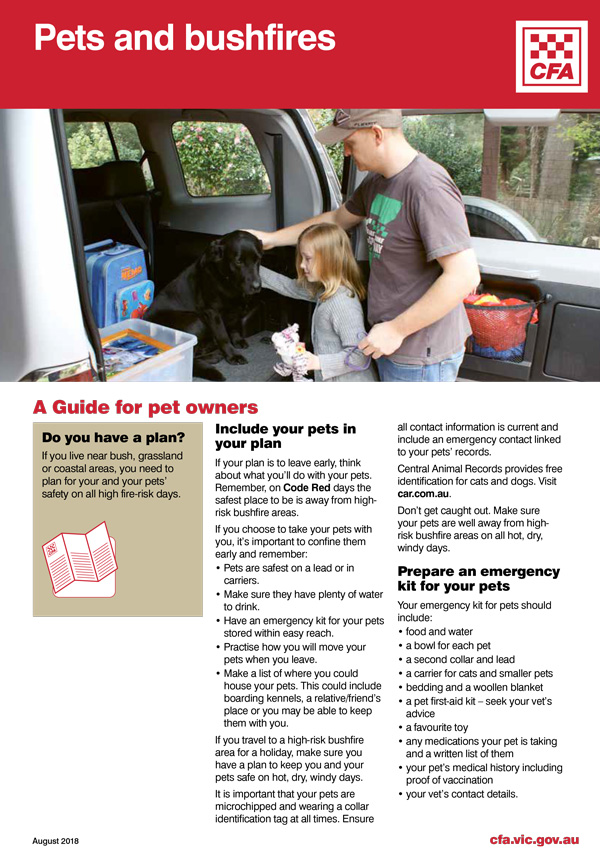
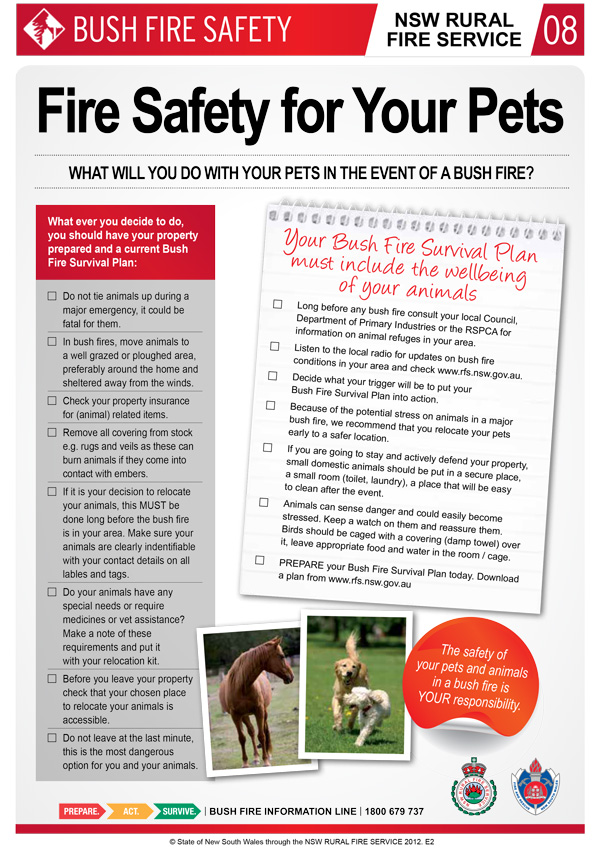
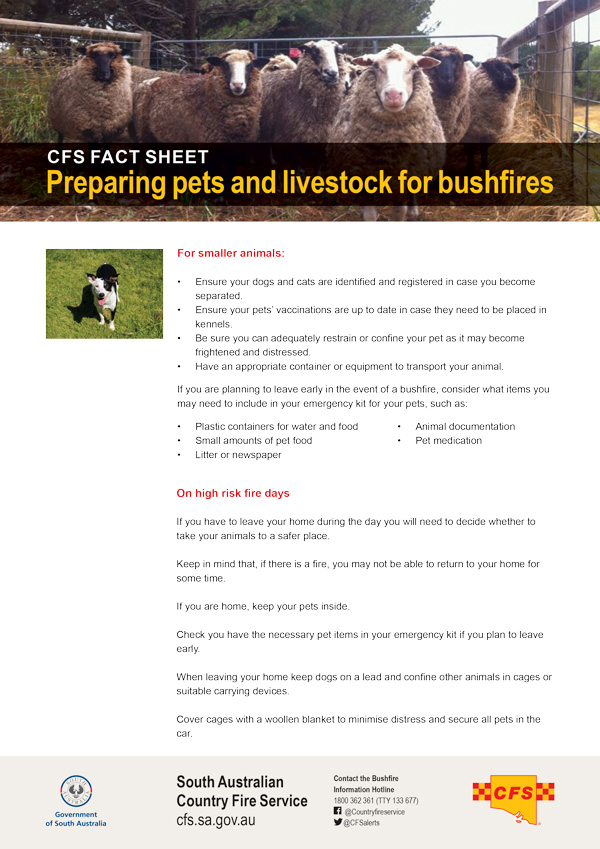
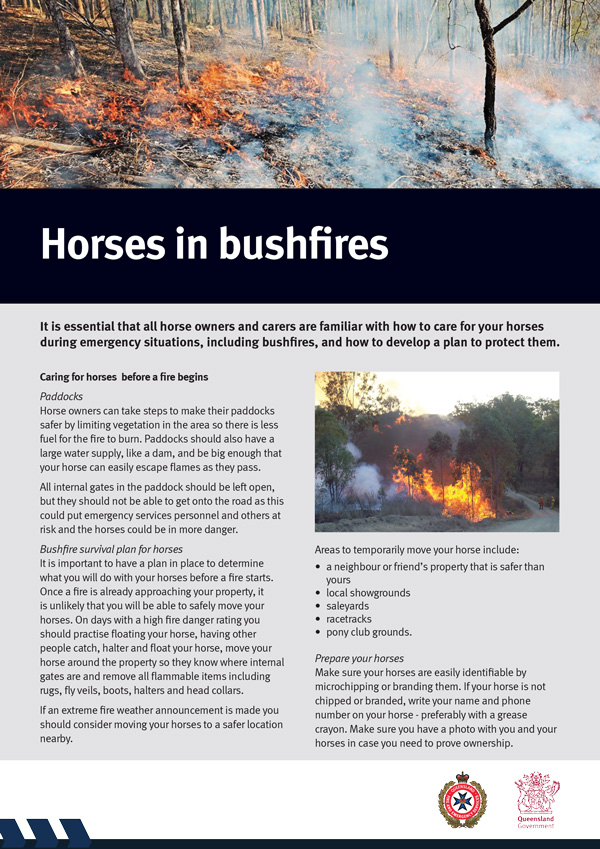

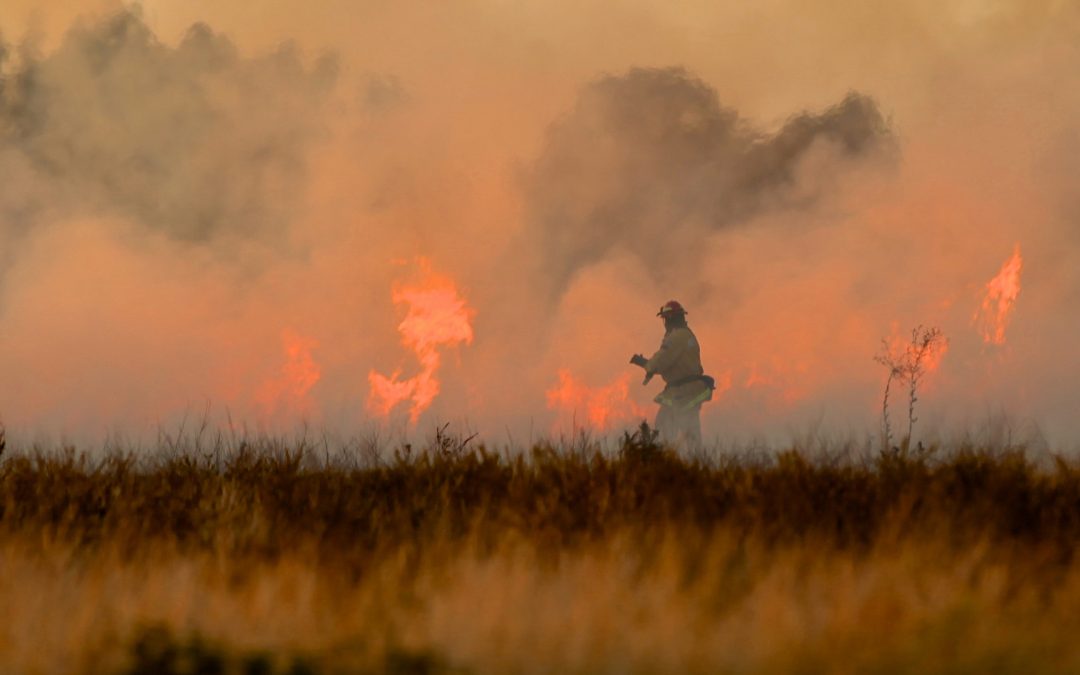
Recent Comments